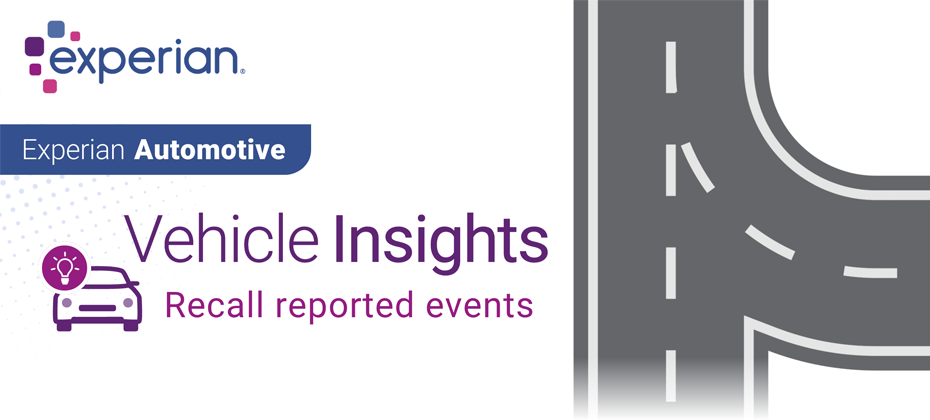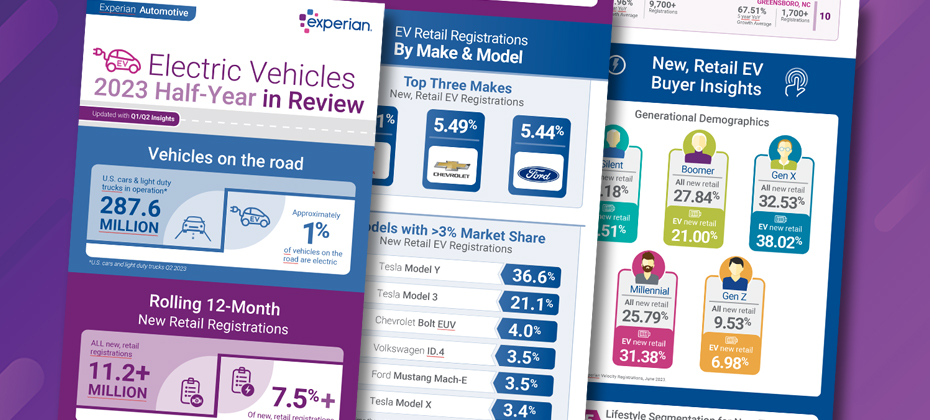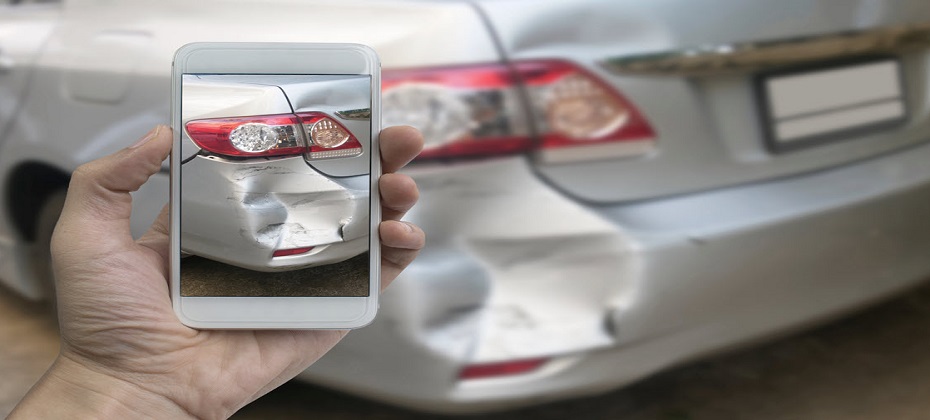
Automotive Blog
Welcome to the Experian Automotive Blog. Keep current on best practices and trending topics for the Auto industry.

It's 2024, and it has never been easier to buy a car in person or online, but automobiles are not quite as affordable as prior to the pandemic. While everyone is looking for the best car deal, some folks are pushing it too far and are falling for auto scams. What is auto lending fraud? Fraud perpetrators are drawn to sectors they perceive as highly lucrative. The accessibility of online vehicle financing and purchasing, coupled with the substantial financial magnitude associated with automotive transactions, renders the auto industry an optimal avenue for cash-out endeavors. Auto lending fraud refers to deceptive or fraudulent activities related to obtaining or processing auto finance. This can involve various schemes aimed at misleading lenders, financial institutions, or individuals involved in the lending process. Criminal networks now operate on social media sites like Facebook and Telegram, offering a unique car buying service using synthetic identities. They create synthetic identities, finance cars with no down payment, and deliver vehicles to addresses chosen by buyers. The process involves selecting a car online, sending a small amount of dollars and a photo against a white background, and receiving a fake driver's license. Those networks claim to exploit car sites' policies successfully. While appealing to those in urgent need of a car, the service poses significant risks as the synthetic identity may be used for other fraudulent activities beyond car purchase. Who is at risk? Everyone involved in the car buying process is at risk of falling victim to auto loan fraud. Car buyers looking to secure financing, as well as lenders, need to be aware of the potential red flags and take necessary precautions to safeguard their interests. Thieves leverage the internet and electronic transactions to perpetrate auto loan fraud. While the growth of online commerce has improved many aspects of trade, it has also made personally identifiable information and financial details vulnerable to data breaches. Unscrupulous individuals can gain unauthorized access to such information, providing the foundation for various identity theft schemes. The internet also facilitates the creation of seemingly legitimate documents that support auto loan fraud. Online services exist to help fraudsters fabricate income statements and fake employment verification from fictitious companies. This trend has made auto loan fraud an increasingly popular method for acquiring vehicles with minimal cash and risk. Another auto loan fraud trend is the increased use of CPN (Credit Privacy Number). Credit Repair firms introduced a novel strategy targeting consumers — the CPN (Credit Privacy Number). Marketed as a nine-digit alternative to a Social Security Number (SSN), CPNs are purportedly usable for obtaining credit. However, it is crucial to note that utilizing a CPN for credit applications constitutes a criminal offense, potentially leading to legal consequences, and car dealerships should not accept them. Detecting auto loan fraud There are several types of auto loan fraud worth noting to better understand the landscape: Income fabrication: Prospective buyers may falsify their income details to qualify for a larger loan or better terms. Lenders should verify income using documents like pay stubs, tax returns, or bank statements and watch out for inconsistencies. Employment misrepresentation: Applicants could lie about their job titles or employment status. Lenders should verify employment details through HR departments or by directly contacting the employer. Trade-in vehicle deception: Some individuals may overstate the value of their trade-in vehicle to secure a higher loan amount. Lenders should perform thorough appraisals or consult trusted sources to ascertain the accurate value of the trade-in. Identity fraud: Fraudsters can assume someone else's identity, commit first party fraud or create a fictitious persona to obtain an auto loan. Lenders must verify the applicant's identity using reliable identification documents and consider using identity verification tools. Forged documentation: Fraudsters may forge or alter documents like income statements, bank statements, or driver's licenses. Lenders should scrutinize documents carefully for discrepancies or signs of tampering. Straw borrower fraud: In this scenario, someone with poor credit convinces a friend or relative with better credit to front the deal, posing as the buyer. A better credit score allows for better terms or a more valuable vehicle. The actual buyer may continue to make payments to the friend, or the loan may become delinquent, negatively affecting the friend's credit score. In extreme cases, the straw buyer is part of a fraud ring, and the vehicle has already been sold in a foreign market. Synthetic identity fraud: Data breaches providing personally identifying information enable identity theft schemes. Perpetrators use illicitly acquired information to create false borrower profiles that appear authentic. These profiles typically have excellent credit, a social security number, an affluent home address, stable employment, and other attributes that make them seem like desirable borrowers. However, a detailed investigation reveals subtle inconsistencies indicative of high risk. How to prevent auto loan fraud To combat auto loan fraud and protect profitability, auto lenders can leverage technological advancements. By applying analytics and machine learning to millions of loan applications and histories, you can identify fraudulent patterns and inconsistencies. Machine learning can determine the type of suspected fraud and provide a confidence factor to guide further investigation and verification. Additionally, you should: Conduct thorough background checks on prospective buyers and verify their personal information and documents. and verify their personal information and documents. Implement a comprehensive loan underwriting process that includes income verification, employment verification, and collateral evaluation. Educate employees about common fraud schemes, warning signs, and best practices to ensure they remain vigilant during loan applications. Foster a culture of cooperation with local law enforcement agencies, sharing information about suspected fraudsters to help prevent future incidents. It is important for individuals and businesses to be vigilant and report any suspicious activity. Car dealerships and financial institutions work to prevent fraud through proper identification verification, credit checks, and adherence to legal and ethical standards. If you suspect fraudulent activity or identity theft, it is crucial to report it to the appropriate authorities immediately. Gearing-up Taking advantage of the latest fintech capabilities, such as cloud-based loan origination that integrates analytics, machine learning, and automated verification services, can significantly reduce the likelihood of fraudulent applications becoming another auto lending fraud statistic. By combining the best data with our automated ID verification checks, Experian helps you safeguard your business and onboard customers efficiently. Our best-in-class solutions employ device recognition, behavioral biometrics, machine learning, and global fraud databases to spot and block suspicious activity before it becomes a problem. Learn more about our automotive fraud prevention solutions *This article includes content created by an AI language model and is intended to provide general information.

The automotive industry is rapidly evolving and digital marketing is becoming increasingly important. To stay ahead of the competition, it’s essential to understand the top digital audiences in the automotive industry. To help you with this, we recently analyzed audience activation activity and compiled the Auto 2024 Digital Audience Report. The report highlights the top four digital audience categories for the automotive industry: Automotive Lifestyle and Interests Retail Shoppers Purchase Based Demographics For each of the top four categories, the report provides specific audience examples automotive marketers can leverage for specific marketing campaigns. Examples include likely frequent spenders at auto service and repair shops or consumers who are likely to be in the market to buy an Alternate Fuel Electric vehicle in the next 180 days. To learn more about where Experian is seeing the top third-party audience activation, read the Auto 2024 Digital Audience Report.

Are you ready to talk football? And read some Taylor Swift puns? And hear about a big automotive ad measurement success story? 'Don’t Blame Me’, I warned you…. As we are all aware, Travis Kelce will be playing for the Chiefs on Superbowl Sunday. Whether you are cheering for the Chiefs, the 49er’s, or you’re just there to watch the commercials and half-time show, ‘You Need to Calm Down’ and just expect to hear a couple references during the game about Taylor and Travis’ ‘Love Story’. Ad Measurement at the Top of Its Game Before the final match-up of this season though, let’s go ‘Back to December’ and talk about a “Red” hot advertising success story from Thursday Night Football. An automotive advertiser wanted to better understand the impact of advertising frequency on vehicle purchase activity. To do this, the advertiser initiated an Amazon Prime streaming advertising campaign to reach Thursday Night Football (TNF) audience viewers. They reached these viewers by leveraging in-game media to raise awareness with new and TNF-engaged audience viewers. In addition, the advertiser used remarketing techniques and other Amazon ads to re-engage the previously exposed TNF viewers. Campaign Results—More Than Just Karma! After the campaign was over, the automotive advertiser wanted to learn whether the results were more than just ‘Karma’. They used Experian’s Vehicle Purchase Insights data within Amazon Marketing Cloud (AMC) to fill in the ‘Blank Space’ and attribute vehicle sales to the exposed TNF audience. Customers exposed 2-3 times to their ads were 1.3X more likely to purchase a vehicle than viewers who were exposed to the advertising only once Customers exposed to their ads 4 times were 1.6X more likely to purchase a vehicle than viewers who were exposed to the advertising only once The advertiser understood ‘All Too Well’ the results, the campaign was a success! Even if you’re over all the pop culture references and the Swift romance, ‘Shake it Off’, there’s no reason for any ‘Bad Blood.” The ‘Fearless’ leader of the scoreboard will have their ‘Wildest Dreams’ come true and be named the Super Bowl LVIII champion. To read more about this case study, (without the Taylor Swift song title puns), click here.

Auto dealerships may sell dreams of open roads and freedom, but unfortunately, they also attract a different kind of customer: the identity thief. With high-value transactions and access to sensitive personal information, auto dealerships are prime targets for various fraudulent schemes. So, buckle up as we explore the most common types of identity fraud impacting dealerships and how to keep your wheels safe. Four common fraud schemes dealers need to be aware of 1. Third-Party Identity Fraud (Stolen Identities): Hijacking the Identity Highway This method doesn't involve creating new identities; it steals existing ones. Thieves steal personal information, often through data breaches or phishing scams, and use it to apply for auto loans under the victim's name. The dealership unwittingly approves the loan, leaving the real person saddled with the debt and a ruined credit score. 2. Synthetic Identity (Fabricated Credentials): Frankenstein Fraud on the Fast Lane Think of synthetic identity fraud as identity theft with a twist. Criminals combine real and fake information, like stolen Social Security numbers and fabricated addresses, to create entirely new personas. These fabricated identities then build clean credit histories, allowing them to qualify for high-value loans like car financing. By the time the dealership realizes the fraud, the car, and the fake persona have vanished. 3. First Party: No Way Will I Pay This method doesn't involve creating new identities; rather it is when a person knowingly misrepresents their identity or gives false information for financial or material gain. Fraudsters often have no plans to pay for their vehicle. 4. Document Fraud: Paper Trails of Deception Fraudsters can also manufacture fake or altered documents like driver's licenses, proof of income and employment verification. These forged documents create a veneer of legitimacy, allowing them to bypass dealership verification checks and secure loans based on fabricated information. Four ways dealerships can keep their brakes on fraud 1. Robust verification: Implementing multi-factor authentication, cross-referencing information with reliable sources, and verifying documents with advanced technology can significantly reduce the risk of deception. Fraud Protect™ from Experian Automotive leverages license scanning and selfie capture to verify identity. Dealers can find the true person and verify the activity through device, behavior, and step-up services. 2. Employee vigilance: Training staff to identify suspicious behavior and report potential fraud attempts can create a strong internal defense system. Fraud Protect fits within your current systems and processes. The software integrates with your CRM and does not require heavy software training or any additional hardware simplifying employee usage. 3. Secure data: Investing in data security measures like encryption and access controls can significantly deter hackers and minimize the damage from data breaches. Fraud Protect leverages Experian’s world-class data to handle the customer relationship carefully and detect errors and discrepancies. 4. Partnerships: Collaborating with credit bureaus, law enforcement agencies and fraud prevention systems can provide valuable insights and resources for fighting fraud. Experian is the world’s leading information services company. Fraud Protect from Experian Automotive offers a unique partnership for dealers through seamless CRM integration. This simple process makes multiple levels of risk identification quick and efficient for busy buyers. By acknowledging the various forms of identity fraud and implementing proactive measures, dealerships can protect themselves and their consumers from the impact of identity fraud. Fraud Protect empowers dealers with our leading fraud, identity and verification capabilities, integrated within your unique workflows. Whether on your website, leveraged before test drives, initiating out-of-state & and remote closings, or before contracting, Fraud Protect quickly uncovers potential fraud. The entire process is a quick and painless way to address risk while establishing customer trust. Take the first step in protecting profits and preventing fraud by visiting our auto fraud prevention solutions webpage.

According to Experian’s Automotive Consumer Trends Report: Q3 2023, CUVs accounted for 48.3% of new retail registrations and SUVs comprised 13.0%.

As vehicle inventory continues to restore post-pandemic, data through the third quarter of 2023 showed new vehicle registrations are on the rise again—a positive sign that the market is leveling out. According to Experian’s Automotive Market Trends Report: Q3 2023, new vehicle registrations increased 12.7% year-over-year, reaching 11.5 million. On the used side, registrations declined to 29.3 million through Q3 2023, a 2% decrease from 29.9 million last year. Digging a bit deeper, CUVs/SUVs were the most registered new vehicle segment at 56.9%, up from 56.2% compared to last year. Pickup trucks declined from 18.6% to 17.4% year-over-year and sedans went from 17.1% to 16.8% in the same time frame. While knowing what types of vehicles consumers are interested in is beneficial for automotive professionals, breaking down the most sought-after models will paint a fuller picture as they assist shoppers in finding a vehicle that fits their needs. For instance, despite new pickup truck registrations declining year-over-year, the Ford F-150 made up the highest share of new vehicle registrations through Q3 2023—reaching 3%. The Tesla Model Y and Toyota RAV4 were not far behind, both coming in at 2.5% this quarter. They were followed by the Chevrolet Silverado 1500 and Honda CR-V tying at 2.3%. ICE vehicles continue to grow Taking a deeper dive into the fuel type share, ICE vehicles continue to grow year-over-year, even with electric vehicles (EVs) making headway into the market. Experian Automotive’s Vehicles in Operation (VIO) data as of Q3 2023 shows ICE vehicle registrations grew to 265.7 million, up from 264.5 million last year, while hybrid vehicles increased to 8.0 million, from 6.9 million in the same time frame. Meanwhile, EVs went from 2.0 million last year to 3.0 million this year and diesel saw a slight uptick from 9.6 million to 9.9 million in the same period. Leveraging different data points and staying up to date on vehicle registration trends can better prepare professionals as the market remains ever-changing and consumer preference continues to shift. To learn more about vehicle market trends, view the full Automotive Market Trends Report: Q3 2023 presentation on demand.

Vehicles with recalls are on the road. In fact, as of July 2023, there were over 15M vehicles on the road in the United States that have a recall that was reported for that vehicle between January and June 2023². Awareness of Open Recalls and the availability of remedies is important for our Automotive clients. As a result, we have added the National Highway Transportation Safety Administration (NHTSA) number and remedy availability flag to three of our Vehicle History Data Solutions: AutoCheck Vehicle History Report Dealers and consumers will be aware of open recalls and if there is a remedy available for the recall. This can alleviate consumer concern over an open recall if there is no remedy available facilitating consumer confidence in a vehicle purchase. AutoCheck Triggers Clients will be aware of any open recalls and the remedy viability in their vehicle portfolio. Many clients use AutoCheck Triggers to make business decisions regarding their vehicle portfolio. Auto AccuSelect Adding the NHTSA recall number and remedy availability flag to Auto AccuSelect allows clients to be aware and take action regarding the vehicles they are evaluating. It is critical to know open recall information, as well as the overall history of a vehicle before buying or selling a used car. Experian Automotive’s vehicle history data solutions, such as a the AutoCheck vehicle history report, can help you buy and sell vehicles with confidence. AutoCheck has 98.96% of manufacturer coverage for recall data based on vehicles in operation. If you’d like to learn more about a recent analysis Experian Automotive conducted about the number of recalls reported for the first half of 2023, where those events were reported and where those vehicles are currently in operation, click to view our Recall Insights Infographic.

According to Experian’s State of the Automotive Finance Market Report: Q3 2023, the average new vehicle loan amount decreased to $40,184, from $41,543 in Q3 2022 and the average used vehicle loan amount went from $28,684 to $27,167 year-over-year.

Lemon vehicle history is a serious issue that can have a significant impact on the automotive industry. Buying a vehicle that is branded as a lemon may harm a dealership or the OEM's reputation. Customers may be less likely to buy automobiles from that manufacturer or dealership in the future if they learn the vehicle they bought was branded a lemon. Used vehicles with lemon vehicle history has implications Furthermore, automakers may incur higher costs as the expense of buying back and fixing lemon vehicles is frequently the responsibility of the auto manufacturers. Finally, the used automobile market may be impacted by a vehicle's lemon history. Used cars with lemon vehicle history events are frequently worth less than equivalent autos without such activity. New lemon-reported events analysis infographic available View our most recent Vehicle Insights Infographic Report: Lemon Reported Events Data Analysis. You’ll learn more about lemon-reported activity for vehicles, what percentage of owners repurchase a different vehicle after the initial reported activity, and how many vehicles with the lemon event history are still on the road. We have a series of vehicle insight infographic reports you may also be interested in: Water and Flood Reported Events Vehicle Accident and Damage Insights

Experian Automotive has updated our Electric Vehicles 2022 Year-in-Review Infographic Report with new 2023 Half-Year insights. In the previous report, we shared that over 6% of new, retail registrations were for electric vehicles. As we evaluated the current state of the Electric Vehicle Market for the first half of 2023 (January-June registrations), the percentage of new, retail registrations for electric vehicles has increased to over 7.5%. There are several factors driving consumer adoption of electric vehicles in the United States, including: Environmental concerns: Consumers are increasingly concerned about the environmental impact of transportation, and EVs produce zero emissions at the tailpipe. Government incentives: Many state and federal governments offer incentives for the purchase of electric vehicles, such as tax credits and rebates. Falling battery costs: The cost of lithium-ion batteries, the key component of EVs, has fallen in recent years, making EVs more affordable for consumers. Increasing availability of EV models: Automakers are releasing a growing number of EV models, giving consumers more choices to fit their needs and budgets. Despite the progress that has been made, there are still some challenges that need to be addressed to accelerate EV adoption in the United States. These challenges include: Lack of charging infrastructure: There is a need for more public charging stations, especially in rural areas and along major highways. High upfront cost: EVs can still be more expensive to purchase than gasoline-powered vehicles, even after factoring in government incentives. Range anxiety: Some consumers are concerned about the range of EVs, which can be limited compared to gasoline-powered vehicles. Despite the challenges, the future of electric vehicles in the United States is bright. Automakers are investing heavily in EV development, and the number of EV models available to consumers is expected to continue to grow. Additionally, state and federal governments are taking steps to support EV adoption, such as investing in charging infrastructure and offering incentives for consumers and businesses to purchase If you’d like to learn more about the current state of the Electric Vehicle market and buyer and how that market is growing and changing, check out our Updated Electric Vehicles Year in Review Infographic.

The 2023 hurricane season is upon us. This year, over 21 named storms were predicted for this year, and we have already seen storms make landfall. One of the biggest dangers that hurricanes pose to the automobile industry is vehicle water and/or flood damage. In 2022, FEMA paid out over $1 billion for flood damage to automobiles in the United States. This damage can have a significant impact on businesses in the automobile industry, including: New car dealerships: Flood damage can destroy new cars and trucks, forcing dealerships to replace them. This can be a costly proposition, especially in a time when supply chains are already disrupted. Used car dealerships: Flood damage can also damage used cars, making them less valuable or even unsalable. This can lead to lost revenue for used car dealerships. Auto repair shops: Auto repair shops may be called upon to repair flood-damaged vehicles. However, some flood-damaged vehicles may be beyond repair. This can lead to lost revenue for auto repair shops. Auto parts suppliers: Auto parts suppliers may also be impacted by flood damage. If factories that produce auto parts are flooded, it can disrupt the supply of auto parts to dealerships and repair shops. In addition, it is important to note that flooded cars may still be on the road. And these vehicles may not be in operation in the geography where the reported water and/or flood damage occurred. To help you stay up to date on the latest insights into flood damaged vehicles we’ve put together a complimentary Vehicle Insights: Water and Flood Reported Events Infographic. You’ll learn: • What percentage of owners repurchase a different vehicle after water or flood damage for their current vehicle • Where was the damage originally reported? • Where are vehicles with water or flood damage currently located? Download the Vehicle Insights: Water and Flood Reported Events Infographic Now! Here is another resource you may find useful to help mitigate the risk of purchasing flood damaged vehicles. Check out our Free AutoCheck Flood Risk Check.

Electric vehicles (EVs) are sustaining prominence throughout the automotive industry, and data from the second quarter of 2023 shows registrations are still on the rise. According to Experian’s Automotive Consumer Trends Report: Q2 2023, 7.50% of new vehicle registrations were EVs, resulting in more than 2.7 million EVs in operation in the US, an increase from the approximate 1.7 million this time last year. Though, despite the continued growth in EV popularity, data found that 85% of EV owners also have a gas-powered vehicle in their household garage and 11% have a hybrid vehicle. It’s possible that majority of consumers prefer to have a secondary vehicle for comfortability, considering charging stations aren’t as accessible in some states and gas operated vehicles offer more miles. That said, it’s important for automotive professionals to have additional insight when helping consumers find a vehicle that fits their lifestyle, such as if they have plans to keep another vehicle in addition to their EV and the type of vehicle they’re interested in. Luxury EVs dominate market share When looking at new EV registrations by vehicle class in the last 12 months, luxury EVs accounted for 77.73%, while non-luxury made up the remaining 22.67%. It’s notable that Tesla led the luxury EV registration market share in Q2 2023 at 81.61%, followed by BMW at 4.42%, Rivian at 3.76%, Mercedes-Benz at 3.27%, and Audi coming in at 2.52%. For non-luxury EVs, Chevrolet accounted for 24.21% of new registration market share this quarter and Ford was not far behind at 24.00%, followed by Volkswagen at 15.77%, Hyundai at 15.22%, and Kia at 9.17%. Breaking the data down further, Tesla made up four of the top five models for luxury EVs in Q2 2023, which explains the dominance in overall luxury EV market share. This quarter, the Model Y came in at 47.36%, followed by the Model 3 at 27.30%, the Model X (4.42%), the BMW i4 (2.82%), and the Model S (2.53%). Meanwhile, the Chevrolet Bolt EUV accounted for 17.67% of the non-luxury EV market share in Q2 2023 and the Volkswagen ID.4 came in second at 15.77%, followed closely by the Ford Mustang Mach-E at 15.74%, and the Hyundai IONIQ 5 at 11.13%. Despite Tesla comprising the majority of luxury EV market share, something professionals should keep in mind is other OEMs making their way into the market, which will give consumers more models to choose from as the gas alternative vehicles continue to grow in popularity. This will be important data to leverage in years to come when helping a consumer find a vehicle. To learn more about EV insights, view the full Automotive Consumer Trends Report: Q2 2023 presentation.

The deprecation of third-party cookies is one of the biggest changes to the automotive digital marketing landscape in recent years. Third-party cookies have long been used to track users across the web, which allows advertisers to target them with relevant ads. However, privacy concerns have led to the deprecation of third-party cookies in major browsers, such as Google Chrome and Safari. This change will have a significant impact on automotive marketers, as it will make it more difficult to track users and target them with ads. However, there are several things that auto marketers can do to prepare for the cookieless future. Here are some marketing tips when the cookie deprecates: Focus on first-party data. First-party data is data that you collect directly from your customers, such as email addresses, contact information, and purchase history. This data is more valuable than third-party data, as it is more accurate and reliable. You can use first-party data to create targeted ad campaigns and personalize your marketing messages. Work with a third-party aggregator. Automotive marketers can tackle a cookie-less world by using other sources of consumer data insights. For instance, a third-party data aggregator, like Experian, has access to numerous sources, platforms, and websites. Beyond that, we have access to a vast range of specific consumer data insights, including vehicle ownership, registrations, vehicle history data, and lending data. We take all that information and help marketers segment audiences and predict what consumers will do next. Leverage Universal Identifiers. Universal Identifiers provide a shared identity to identity across the supply chain without syncing cookies. First-party data (such as CRM data) and offline data can be used to create Universal Identifiers. Use contextual targeting and audience modeling. Contextual targeting involves targeting ads based on the content that a user is viewing. Contextual targeting is a privacy-friendly way to target ads and it can be effective in reaching relevant audiences. Utilize Identity Graphs. An identity graph combines Personally Identifiable Information (PII) with non-PIIs like first-party cookies and publisher IDS. Identity graphs will allow cross-channel and cross-platform tracking and targeting. Experian’s Graph precisely connects digital identifiers such as MAIDS, IPs, cookies, universal IDs, and hashed emails to households providing marketers with a consolidated view of consumers’ digital IDs. The deprecation of third-party cookies will be a challenge for auto marketers, but it's also an opportunity to rethink marketing strategies and focus on building stronger relationships with customers. Here are some additional cookieless marketing tips: Start preparing now. Don't wait until the last minute to start preparing for the cookieless future. Start collecting first-party data from your customers now. Be transparent with your customers. Let your customers know what data you are collecting and how you are using it. Make sure that you have their consent to collect and use their data. Be creative with your marketing campaigns. There are several ways to reach your target audience without relying on cookies. Be creative with your marketing campaigns and experiment with different strategies. Sample audience segments include: Consumers in market Loan status In positive equity Driving a specific year/make/model 1000+ lifestyle events such as new baby, marriage, new home Geography, demographics, psychographics To take it to the next level, we can use predictive analytics to go beyond what cookie data could provide by predicting who is ready to purchase a vehicle. For example, an auto marketer may have used cookie data to find buyers who had shown interest in a hybrid sedan, but that’s where it ended. When combining audience segmentation with a predictive model, marketers can target and identify consumers in-market and most likely ready to purchase a specific model. In this way, the data-driven insights from a third-party data provider specializing in automotive insights can replace the cookie-driven approach and take it a significant step beyond. The cookieless future is coming, but marketers who are prepared will be able to succeed. By focusing on first-party data, contextual targeting, and partnerships, auto marketers can reach their target audiences and achieve marketing goals.

In a recent episode of the Used Car Dealer Podcast, host Zach Klempf, sat down with Jim Maguire, Experian’s senior director of product marketing for automotive, to discuss the prevalence of fraud in the automotive industry. During their conversation, Jim highlighted the findings in Experian’s 2023 Identity and Fraud Report, giving listeners a deeper understanding into the evolving dynamics of fraud, with data and insights on the current landscape and what actionable strategies dealers can take to prevent it. The episode is now available across all major podcast platforms, click the link below to watch: YouTube For more information on the Used Car Dealer Podcast, visit - https://www.sellyautomotive.com/podcast Facebook - @SellyAutomotive Twitter - @SellyAutomotive LinkedIn - @SellyAutomotive

We already know over 286 million cars and light-duty trucks are in operation in the United States and that 4 out of 10 of those vehicles have been in an accident. That’s over 114 million vehicles on the road that have been in an accident. However, have you ever wondered what happens to a vehicle after it’s been involved in an accident? Does the owner keep the vehicle or get rid of it? If they decide to purchase a different vehicle, how soon after the reported accident do they purchase it? Does the frequency and timing in which an owner household purchases a different vehicle vary based on the accident's severity? Does this vary by other factors, such as vehicle type? If so, what vehicles are owners most likely, and least likely, to dispose of after a reported accident? To answer these questions, we completed an internal 3-year analysis of over 15 million unique VINs from all 50 states, Washington D.C., and Puerto Rico. We created a new detailed report with all the data insights! Check out our complimentary Vehicle Accident & Damage Insights report today!